One of the first things I always recommend to those getting started in genealogy is to collect as many family photographs as possible, from the oldest relatives you know, and try to identify everyone in the photographs. There may be a time that you won’t be able to ask who the people in your family photos are, and if you don’t find out who has old family photos, they may end up being thrown out at some point. If you do have a photo, but no way to identify the person or person in the photo, there is an approach you can take that may help you to figure it out.
In one of my earliest posts (Genealogy Basics: Up, Down and Sideways) I describe why it’s important to track down collateral relatives, such as finding all the descendants of your oldest known ancestor. Besides building out your tree, these people may end up knowing more about your common ancestors than you do. Even a small piece of information, such as the town someone was born in, can help break down genealogical brick walls. Similarly, those distant relatives may actually have the same photograph you have, and they may know who is in it.
When I started collecting family photos, my grandfather gave me a set of three large glass slides that his uncle had given him. One slide had two photos on it, of the same family, one with them wearing hats, and one without hats. I had an idea of who was in those family photos, and later confirmed it. The other two slides were individual portraits of a man and a woman. I did not know who they were, and neither did my grandfather. This is what the negatives looked like:
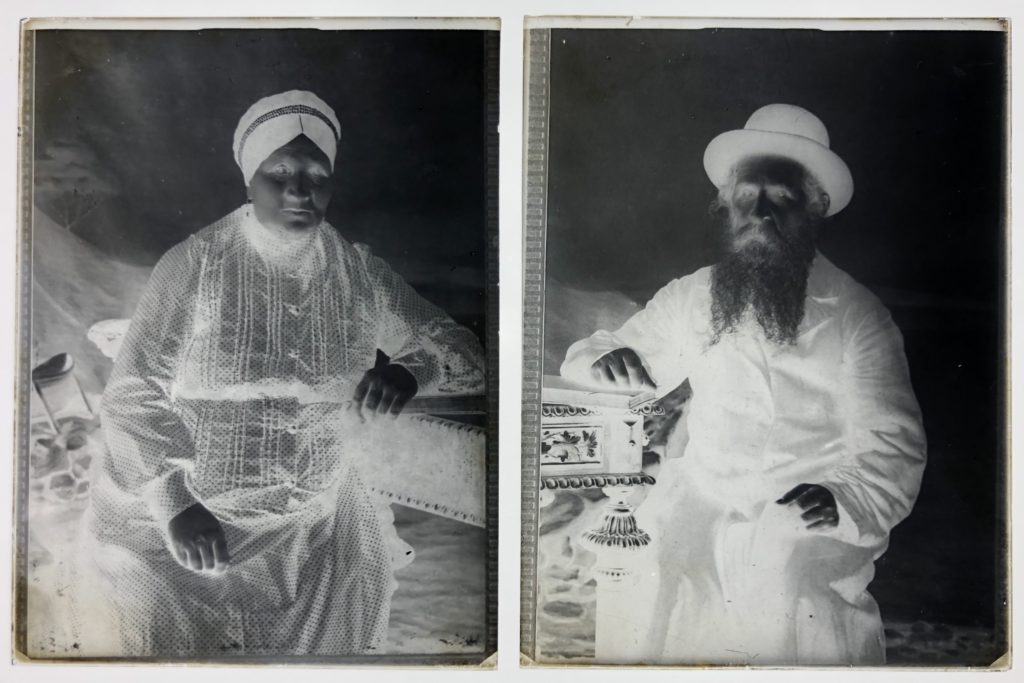
At the time I was living in New York City, and took the negatives down to a professional photo lab to have prints made of them. While I had spent plenty of time in a darkroom when I was younger, I didn’t have one in New York, and in any case I had no experience printing from glass negatives. I took them to the lab and asked for 8″x10″ prints. I then scanned the prints, which gave me the following versions:
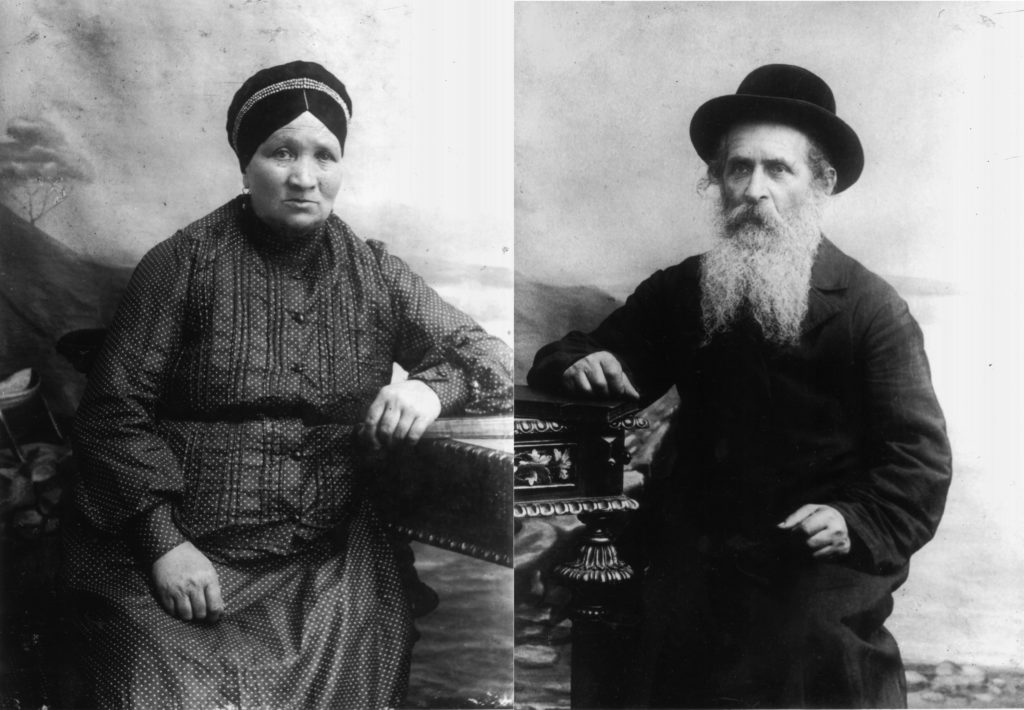
I still didn’t know who was in the pictures, but at least I could see them clearly. After some time I reached out to a relative I didn’t know, who happened to be a son of my grandfather’s uncle that had given him the slides. We didn’t live anywhere near each other, but he agreed to mail me a bunch of photos so I could scans them, and then return them to him. Lo and behold in that pile of photos were copies of the above pictures, and on the backs it said who they were, their relationship to the person writing it (my grandfather’s uncle), her maiden name and city of birth, and where, when, and at what age they were when they died (including both the secular date and the Jewish date). A veritable genealogical gold mine:
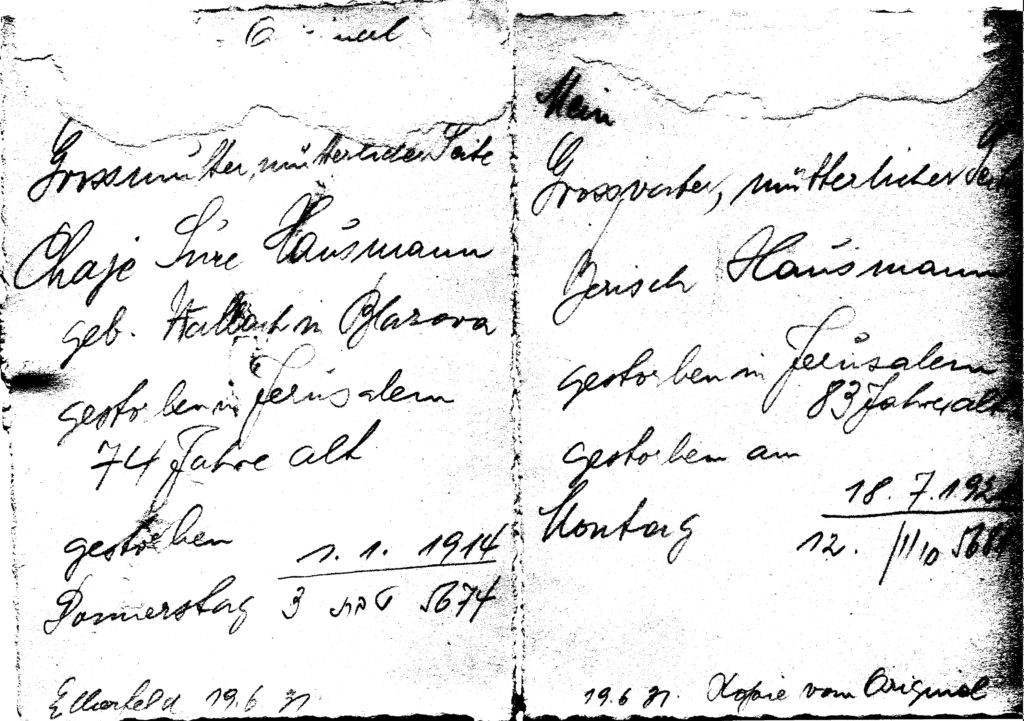
This clearly identified them as his grandparents, and my ggg-grandparents, Chaya Sara (Wallach) and Berisch Hausman. You might notice that they both died in Jerusalem, her in 1914, and him in 1924. More on that in bit.
Some years later, after having moved to Modi’in, I was reviewing my JewishGen Family Finder (JGFF) entries, when I realized I had left out the above names. I added the the two names above with the towns I was aware of, Wallach from Blazowa, and Hausman from Rzeszow, and didn’t think much about it. A couple of months later I received an e-mail from someone also researching the Hausman family. In fact he descended from a different child of the above couple. Not only that, he was convinced my gg-grandmother had died young, since his gg-grandmother had named a daughter the same name as her sister (my gg-grandmother) and he had assumed she had died before that (this is a lesson to never make assumptions). Amazingly, while my family had moved from Rzeszow to Antwerp, and eventually New York, his had ended up in Memphis, and eventually Houston. What shocked us both was while neither of us had been aware of each other, and our families moved to different places, we both at the time were living in Modi’in. He was no more than 5 minutes away from where I received the e-mail.
It’s always nice to discover a fourth cousin, and especially nice to find one interested in genealogy. We met up and compared notes, and I showed him the above photos. He told me they looked familiar, but he didn’t have them in Modi’in. Maybe he had copies back in Texas, and he’d check the next time he was there. Some time later after he returned from a trip to the US, he presented me with the following photos:
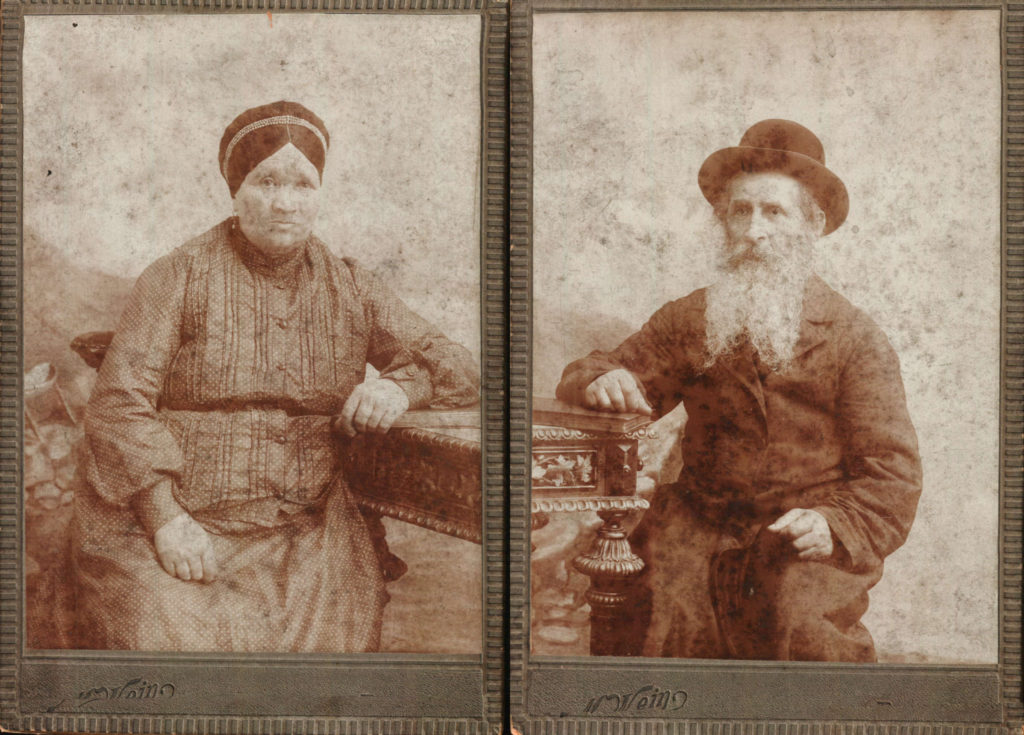
On the back the frames was the name and location of the photo studio (Rzeszow), and a note in pencil guessing that they were the parents of his gg-grandmother (which indeed they were). At this point I already knew who they were, and was able to confirm for his family that what was written was correct (as well as give him better quality versions of the photos).
It’s worth pointing out something about the photos at this point. If you go back up to the original negatives you’ll noticed something not in the prints. I didn’t notice it originally because it had been cropped out by the lab when they printed the photos. If you look at the edges you can see that those slides were copied from photos that were still in the frames. You can see the ridged edges of the frames in those negatives. So it would seem the glass negatives were not the original negatives after all, but rather an internegative made to allow copies to be made. Perhaps my branch received one set of framed images, and they wanted to share them with more relatives. What’s amazing about it, is that the century-old glass slides retained the detail that was lost in the original prints.
So far there were three copies of these photos in two branches of the family. I also found a fourth set in an online family tree, which adds a year that the photos were taken, and includes their (slightly different) names:

These photos turned out to be from a third branch of the family, each which descended from a different child of the couple in the photos. Here the names could have caused a bit of confusion if I didn’t already know their names. Sarah was Chaya Sarah, so that’s not too confusing. Dov is the Hebrew version of Ber(isch), and they are commonly paired as Dov Ber.
Above I pointed out that the backs of the photos that mentioned where they died, showing that they both died in Jerusalem. Using that information, and knowing they lived in Rzeszow, which was in the Austrian province of Galicia at the time, I looked up the Israeli burial societies (see this useful guide to Israeli burial societies on the IGRA web site), found the one that dealt with Galicia, and located their graves on the Mount of Olives:
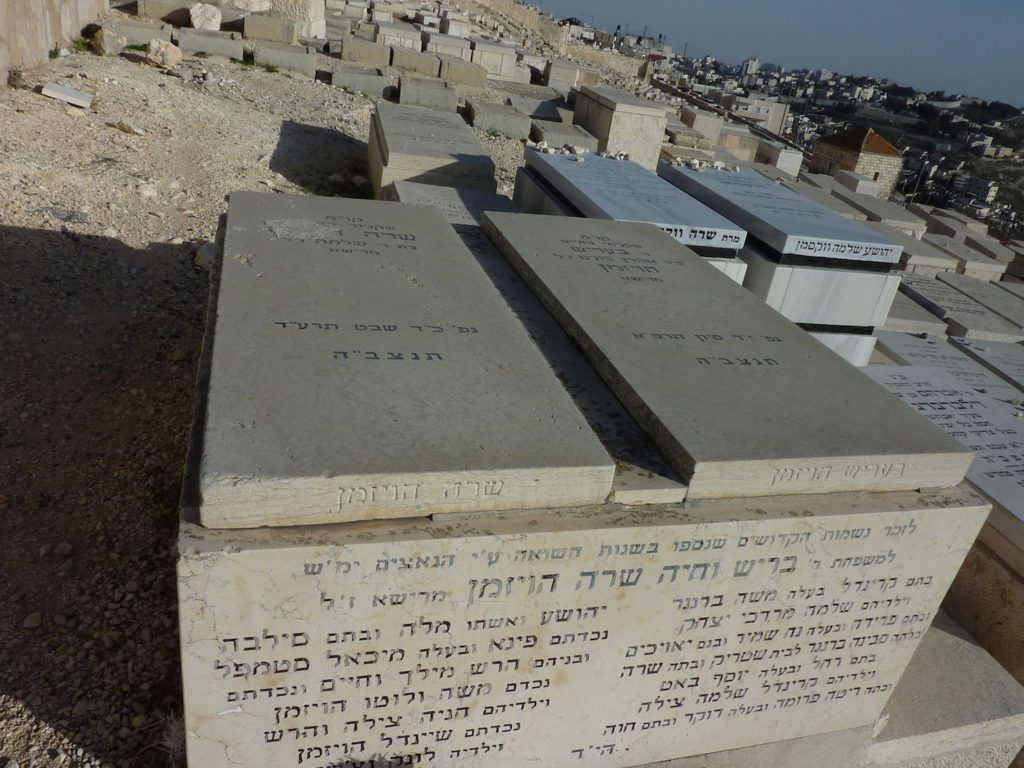
There are a few interesting things about this grave. First, the front of the grave lists their descendants that were murdered during the Holocaust. Clearly family had upgraded their grave site after the Holocaust. It turns out that descendants of a fourth branch of the family re-built their graves after the six day war in 1967. When the Jordanians occupied Jerusalem in 1949 they destroyed many gravestones, even building a road through the graveyard, and building a hotel there. After 1967, when Jews were finally allowed back into the cemetery, families had to reconstruct many of the grave sites. In this case, they rebuilt the grave with a memorial to the couple’s descendants that had died in the Holocaust. An amazing tribute, and an amazing genealogical find as well. Here is another example of where one small piece of information on the back of a cousin’s copy of a photo, can lead to breakthroughs in your research.
So to sum things up, find and scan all those family photos out there, have your older relatives identify as many people as they can, and record any detail, no matter how small written on the back of the photos. When contacting distant family members, always ask about the oldest photos they have, and show them the photos you have, and see if they can help identify people. Make sure you enter all of your relevant town/surname pairs in the JewishGen Family Finder (JGFF) and keep those updated as your discover new names and towns (see Jewish Genealogy Basics: The JewishGen Family Finder if you need help with the JGFF).
What’s your favorite photo story? Post it in the comments below.
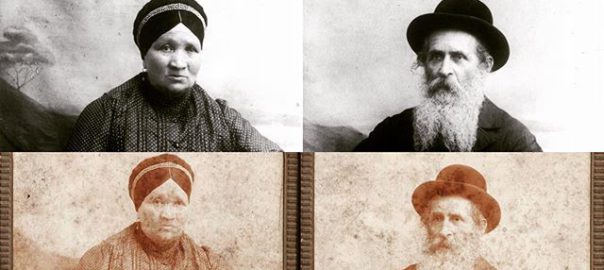



whoever you are, please contact me. My Grandfather’s family is Hausman and he is from Rsezev also. The oldest relative I have identified is Gershon Hausman who married a Chana Seril Koretz. My Grandfather, Yehoshua (we called him Sam) was born in 1888 and came to the US about 1900. I was told the Hausman family were very wealthy and ran a cereal factory in Rsezev. Please contact me at sparkoff55@gmail.com. My name is Steve Parkoff.